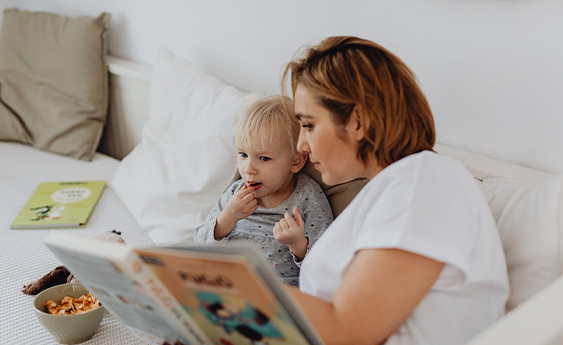TREND NEWS CENTER
Talk to Your Baby: They’re Ready to Communicate
While talking to your baby may seem a bit one-sided, it is actually crucial for their speech and language development. This article will discuss why talking to your baby is so beneficial and give some easy tips on how to talk to your baby.
Babies and communication
Babies are ready to communicate as soon as they are born. While crying is their first method of communication, babies quickly learn other ways to express themselves. For example, by three months of age, most babies are smiling, cooing, and moving their arms and legs when excited or engaged.
Babies are like little human sponges, soaking up everything in their environment, including language. These keen powers of observation are the building blocks for learning how to communicate more effectively, and eventually speak!
Why should you talk to your baby?
As a parent, talking to your baby lays crucial groundwork for their speech development. Studies suggest that babies whose parents talk to them often, use rich language, and implement physical gestures have greater language skills than those whose parents do not. The more you talk to your baby, the more you are supporting their speech and language milestones.
It may seem silly to talk to someone who cannot talk back or even fully understand you yet, but rest assured, your baby is soaking it all in. Babies comprehend speech faster than they learn to speak, but every moment you spend talking to your baby is well spent.
Five ways to talk to your baby
If the idea of talking to your baby seems daunting, here are some practical tips to try. Before long, talking to your baby will start to feel more natural.
1. Narrate your day
Perhaps one of the easiest ways to talk to your baby is to simply narrate what you are doing as you do it. Diaper changes, feedings, bath time, walks outside, and even household chores are all great opportunities to talk to your baby.
2. Read books together
If you think you might need something that feels more “scripted,” reading is an excellent choice. Using different accents, tones, and volumes can enhance the experience even more.
3. Point out objects and ask questions
A great way to start building your baby’s vocabulary is to point out and name objects around them. Using simple labels for things and repetition is important for your baby’s retention. You can also ask questions about the objects and be sure to respond enthusiastically if they babble back an “answer”!
4. Sing
Singing songs is a great way to talk to your baby. Even if you don’t think you can carry a tune, babies love the sound of their parent’s voice. You can add clapping, finger snapping, or even musical instruments to complement your baby’s experience.
5. Mimic your baby’s sounds
Babies often love when you try to speak their language because it reinforces their attempts to communicate. When your baby coos, coo back with the same tone of voice and be enthusiastic when they respond. These “conversations” are helpful in boosting your baby’s confidence as they learn to use their voice.
Relax and have fun with it
Talking with your baby should be fun and low-stress. It is okay to experiment with different techniques until you find ones that feel the most natural to you. Don’t be afraid to mix it up from day to day to keep things interesting.
The age that children begin to say their first words varies widely, but as long as you continue to talk with your baby regularly, your efforts will stimulate their urge to communicate. If you are ever concerned that your baby is not meeting their language milestones, speak with your pediatrician.
Source: Healthnews
